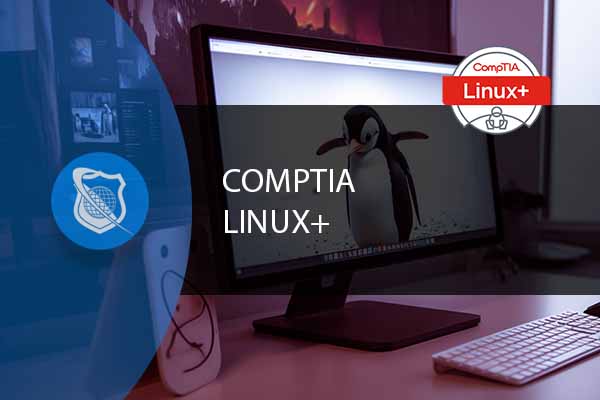When it comes to Linux, understanding file permissions is not just a requirement but a necessity for any developer. Linux File Permissions dictate who can do what with files and directories. Whether you’re a seasoned developer with years of experience or a newbie just getting started, mastering Linux File Permissions is crucial for ensuring Linux security and effective file access control. In this comprehensive guide, we’ll delve deep into the intricacies of Linux File Permissions, covering essential commands like chmod command and chown command, as well as best practices for managing Linux user groups and file ownership.
Why Linux File Permissions Matter
File permissions are the cornerstone of Linux security. They determine who can read, write, or execute files and directories. Incorrectly set permissions can lead to a plethora of issues, including unauthorized data access and potential system vulnerabilities. Therefore, understanding how to properly set and manage these permissions is vital for both individual developers and organizations. In this section, we’ll explore why Linux File Permissions are integral to maintaining a secure Linux filesystem and how they intersect with broader topics like Linux user management and Linux permission levels.
CompTIA Linux+
Unlock the power of Linux with our comprehensive online course! Learn to configure, manage, and troubleshoot Linux environments using security best practices and automation. Master critical skills for the CompTIA Linux+ certification exam. Your pathway to success starts here!
The Basics: Read-Write-Execute
Understanding Permission Types
In Linux, permissions are categorized into three types: read (r), write (w), and execute (x). These are the fundamental building blocks of Linux File Permissions. A read permission allows you to view the file, write permission enables you to modify it, and execute permission grants you the ability to run the file as a program. Understanding these basic permissions is the first step in mastering file access control and avoiding common pitfalls like “Linux permission denied” errors.
Octal and Symbolic Permissions
Linux permissions can be represented in two ways: octal and symbolic permissions. Octal permissions use numbers (0-7), while symbolic permissions use letters (r, w, x). Understanding both is essential for effective Linux user management. For example, an octal permission of “755” translates to read, write, and execute permissions for the owner, and read and execute permissions for the group and others. Symbolically, this would be represented as “rwxr-xr-x”. Knowing how to interpret and set these permissions using commands like chmod is crucial for maintaining a secure Linux environment.
Advanced Topics: Beyond the Basics
Umask Settings and Default Permissions
The umask command sets the default permissions for newly created files and directories. Umask settings are essential for ensuring that files are created with the desired permissions by default. For instance, a umask setting of “022” would create a new file with read and write permissions for the owner and read permissions for the group and others. Understanding umask is crucial for preemptive Linux security measures.
Special Permissions: setuid, setgid, and Sticky Bit
Linux also supports special permissions like setuid, setgid, and the sticky bit. These permissions provide additional controls, such as allowing a user to execute a file with the permissions of the file owner (setuid), or ensuring that new files in a directory inherit the group ownership of the directory (setgid). The sticky bit prevents users from deleting files in a directory unless they own the file or the directory. These advanced features offer more granular control over file attributes and should be understood by any serious Linux developer.
By diving deep into the world of Linux File Permissions, you’ll gain the expertise needed to secure your Linux systems effectively. From the basic read-write-execute permissions to advanced features like ACLs and umask settings, this guide aims to be a comprehensive resource for developers at all levels. Armed with this knowledge, you’ll be well-equipped to tackle any Linux security challenge that comes your way.
The chmod Command: Changing File Permissions
The chmod command is the go-to utility for changing file permissions, and it’s a fundamental tool for anyone serious about Linux security and file access control. This command allows you to set permissions using either octal or symbolic notation, offering flexibility in how you manage your Linux File Permissions.
Using Octal Notation with chmod
In octal notation, permissions are represented by a three-digit number. The first digit represents the owner’s permissions, the second digit represents the group’s permissions, and the third digit represents the permissions for others. For example, to grant read, write, and execute permissions to the owner while giving read and execute permissions to the group and others, you would use:
Bash Copy code
chmod 755 filename
This sets the file permissions to “rwxr-xr-x,” where the owner has read, write, and execute permissions, and the group and others have read and execute permissions. Understanding octal permissions is essential for effective Linux user management and avoiding issues like “Linux permission denied.”
CompTIA Linux+
Unlock the power of Linux with our comprehensive online course! Learn to configure, manage, and troubleshoot Linux environments using security best practices and automation. Master critical skills for the CompTIA Linux+ certification exam. Your pathway to success starts here!
Using Symbolic Notation with chmod
Symbolic notation offers a more readable way to set permissions. In this method, you use letters to represent the types of permission (r for read, w for write, x for execute) and who they apply to (u for user/owner, g for group, o for others). For example, to grant read, write, and execute permissions to the owner, you would use:
Bash: Copy code
chmod u+rwx filename
This command adds read, write, and execute permissions to the user or owner of the file. Symbolic permissions are particularly useful when you want to modify permissions without affecting other existing settings.
The chown Command: Changing File Ownership
Ownership is another crucial aspect of Linux File Permissions. The chown command allows you to change the owner and the group associated with a file or directory. This is particularly important when you’re managing a multi-user environment or when you need to transfer control of files between different Linux user groups.
Basic Usage of chown
For instance, to change the file ownership to a user named “john,” you would use:
Bash Copy code
chown john filename
This command changes the ownership of the file to “john,” but it leaves the group ownership unchanged. Understanding file ownership is key to effective file access control and is often used in conjunction with the chmod command to set appropriate permissions.
Advanced chown Features: Changing Group Ownership
The chown command also allows you to change the group associated with a file or directory. To change both the user and the group, you would use:
Bash Copy code
chown john:developers filename
This changes the file’s owner to “john” and the associated group to “developers.” This is particularly useful in collaborative environments where files need to be accessible by specific user groups.
By mastering the chmod and chown commands, you’re taking significant steps in understanding Linux File Permissions. These commands are essential tools in your Linux security toolkit, allowing you to control who has access to files and what kind of access they have. Whether you’re setting read-write-execute permissions or changing file ownership, these commands offer the granular control needed to secure your Linux filesystem effectively.
Lock In Our Lowest Price Ever For Only $16.99 Monthly Access
Your career in information technology last for years. Technology changes rapidly. An ITU Online IT Training subscription offers you flexible and affordable IT training. With our IT training at your fingertips, your career opportunities are never ending as you grow your skills.
Plus, start today and get 30 days for only $1.00 with no obligation. Cancel anytime.
Linux User Groups and File Access Control
Managing Linux File Permissions effectively often involves dealing with multiple users who may need different levels of access to files and directories. This is where Linux user groups come into play, serving as a cornerstone for robust file access control and Linux security.
Understanding Groups
Linux user groups play a significant role in file access control. By adding users to groups, you can easily manage permissions for multiple users simultaneously. This is particularly useful in multi-user environments like corporate networks or web servers. The Linux groups command is used to display all groups a user belongs to, while the Linux users command lists the currently logged-in users. These commands are essential tools for managing user groups and should be part of any Linux administrator’s toolkit.
Group-Based File Permissions
Once users are organized into groups, you can set file permissions based on these groups. For example, you might have a “developers” group that needs read, write, and execute permissions and a “viewers” group that only needs read permissions. By setting group-based permissions, you can streamline the process of file access control, making it easier to manage and more secure.
Implementing Access Control Lists (ACLs)
For more complex scenarios where the basic read-write-execute permissions are not sufficient, Linux provides Access Control Lists (ACLs). Linux ACLs offer more granular control over file permissions, allowing you to set permissions for specific users and groups beyond the basic settings.
Setting and Viewing ACLs
To set an ACL, you use the setfacl command, and to view an ACL, you use the getfacl command. For example, to grant read and write access to a specific user, you might use:
Bash Copy code
setfacl -m u:john:rw filename
This would give the user “john” read and write access to the file, without affecting the permissions of other users or groups. ACLs are a powerful feature for advanced file access control and are often used in environments that require high levels of security and customization.
Advanced Topics
Umask Settings
The umask command sets the default permissions for newly created files and directories. Umask settings are essential for ensuring that files are created with the desired permissions by default. For instance, a umask setting of “022” would create a new file with read and write permissions for the owner and read permissions for the group and others. Understanding umask is crucial for preemptive Linux security measures and effective Linux user management.
Special Permissions: setuid, setgid, and Sticky Bit
Linux also supports special permissions like setuid, setgid, and the sticky bit. These permissions provide additional controls that can be crucial in certain scenarios.
Setuid and Setgid
The setuid permission allows a user to execute a file with the permissions of the file owner. Similarly, setgid allows a file to be executed with the permissions of the group owner. These are often used for programs that require elevated permissions temporarily but should be used cautiously to avoid potential security risks.
Sticky Bit
The sticky bit is used primarily on directories. It restricts file deletion within a directory to only the owners of the files. This is particularly useful in shared directories, where you want to prevent users from deleting each other’s files.
By mastering Linux user groups, ACLs, umask settings, and special permissions, you’ll have a comprehensive understanding of Linux File Permissions. These advanced features offer the granular control needed to secure your Linux filesystem effectively, making you well-equipped to tackle any file access control challenges that come your way.
Common Pitfalls and How to Avoid Them
Navigating the complexities of Linux File Permissions can be challenging, even for seasoned developers. However, awareness of common pitfalls can save you from unnecessary headaches and potential security vulnerabilities. Here, we’ll discuss some of these pitfalls and how to avoid them, focusing on “Linux permission denied” errors and the often-overlooked directory permissions.
Linux Permission Denied Errors
One of the most common issues developers face is the “Linux permission denied” error. This usually occurs due to incorrectly set permissions or ownership. It’s a clear sign that your file access control is not properly configured, and it can be a significant hindrance in both development and production environments. To troubleshoot this, always double-check your settings using commands like ls -l to list file permissions and id to check user and group IDs. Also, use the Linux sudo command cautiously; while it can override permission issues, it can also lead to greater security risks if misused.
Directory Permissions
Directory permissions are often overlooked but are just as crucial as file permissions in Linux security. They control who can list the files (read), add new files (write), and traverse (execute) the directory. Incorrect directory permissions can lead to unauthorized access or the inability to access needed files. Use the chmod and chown commands to set appropriate directory permissions, just as you would for files. Also, consider the implications of the sticky bit in shared directories to prevent unauthorized file deletion.
Conclusion
Mastering Linux File Permissions is essential for any developer working in a Linux environment. From basic read-write-execute permissions to advanced features like ACLs, umask settings, and special permissions like setuid and setgid, understanding how to effectively manage file permissions and ownership is crucial for maintaining a secure and efficient system.
By familiarizing yourself with essential Linux terminal commands like chmod, chown, setfacl, and getfacl, as well as best practices for Linux user management, you can avoid common pitfalls like “Linux permission denied” errors and unauthorized directory access. This comprehensive understanding will not only enhance your Linux security but also make you proficient in file access control [1].
So, whether you’re setting up a new Linux server, developing a Linux-based application, or managing a multi-user environment, a deep understanding of Linux File Permissions will make you an invaluable asset in any Linux-based project. Armed with the knowledge from this guide, you’ll be well-equipped to tackle any Linux File Permissions challenges that come your way, ensuring a more secure and efficient system for all.
Essential Linux File Permissions FAQs for Developers
What are the basic Linux file permissions every developer should know?
Linux file permissions are divided into three main types: read (r), write (w), and execute (x). These permissions can be applied to three different groups: the file owner, the group that owns the file, and others. Understanding these permissions is crucial for developers to ensure that files are accessible to the right users and protected from unauthorized access.
How can a developer change file permissions in Linux?
Developers can change file permissions in Linux using the chmod command. This command allows you to set permissions for the owner, group, and others by using either symbolic notation (e.g., chmod u+x filename to add execute permission for the owner) or numeric notation (e.g., chmod 755 filename to set read, write, and execute permissions for the owner, and read and execute permissions for the group and others).
What is the significance of the Linux file permissions octal notation, and how does it work?
The octal notation is a numeric representation of Linux file permissions that simplifies the process of setting permissions. It uses numbers from 0 to 7 to represent different combinations of read, write, and execute permissions. For example, 7 represents read, write, and execute (rwx), 6 represents read and write (rw-), and 5 represents read and execute (r-x). This notation is particularly useful when applying permissions to multiple user groups at once.
How do default permissions work with the umask command in Linux?
The umask command in Linux is used to set the default permissions for new files and directories. It essentially subtracts permissions from the system’s default permissions to determine the final permissions for a new file or directory. For instance, if the system’s default permissions are 777 (rwxrwxrwx) for directories and 666 (rw-rw-rw-) for files, and the umask is set to 022, new files would have 644 (rw-r–r–) permissions, and new directories would have 755 (rwxr-xr-x) permissions.
Why is understanding and managing Linux file permissions critical for developers?
Proper understanding and management of Linux file permissions are critical for developers to ensure the security and proper functioning of applications. Incorrect permissions can lead to security vulnerabilities, such as unauthorized access to sensitive data, or operational issues, such as scripts not running as expected. By mastering Linux file permissions, developers can safeguard their applications and data, comply with security policies, and ensure a seamless workflow.
CompTIA Linux+
Unlock the power of Linux with our comprehensive online course! Learn to configure, manage, and troubleshoot Linux environments using security best practices and automation. Master critical skills for the CompTIA Linux+ certification exam. Your pathway to success starts here!
You may also like:
Mastering Linux User Management: Add Users To A Group In Linux with Command Line Examples
Linux File Permissions – Setting Permission Using chmod
Linux Plus Certification : 10 Reasons Why You Need It
CompTIA Linux+ Exam Questions: Understanding the Key Concepts












